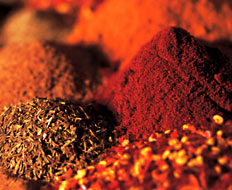Here are three options for making a standard turkey sandwich more exciting and memorable for your valued guests:
- Replace convenient, presliced deli meat with real turkey sliced fresh off the bird. Completely overhaul entire kitchen to enable crew to roast 10–15 whole turkeys at a time on a series of giant rotisseries. Train them to slice each bird precisely during the lunchtime rush. Watch food costs and infrastructure investments immediately blow your profit margin for years to come, while adding a level of operational complexity that’d make the average NASA launch site look like a child’s lemonade stand.
- Seek permission from local city-planning board to rezone your restaurant to allow wild turkeys to graze freely in your parking lot. Maintain small staff to slaughter, pluck, and clean turkeys for a truly fresh sandwich experience.
- Take existing sandwich; add exciting combinations of fresh green herbs, various ethnic spice blends, and maybe some sort of distinctive vinegar; and watch guests swoon over the resulting product. Estimated cost per sandwich: 2–6 cents.
- As options go, it’s pretty clear that using interesting blends of herbs, spices, and other seasonings is a far less costly and cumbersome way to liven up a basic menu item. And given the number and variety of seasonings out there, there are endless opportunities for devising proprietary blends that cut through the clutter to distinguish your offering from a competitor’s.
Seasonings Defined
The standard dictionary definition of seasoning really only scratches the surface. Merriam Webster’s entry is typical: “an ingredient (as a condiment, spice, or herb) added to food primarily for the savor that it imparts.”
That’s all well and good, but it hardly provides a sense of the breadth of choices available. They include aromatics (leeks, onions, garlic, carrot, celery, ginger, lemongrass, and the like), pungent seasonings (chile peppers, black pepper, horseradish, and mustard, for starters), green herbs (basil, cilantro, parsley, mint, thyme, and so on), spices (bark, leaves, berries, and seeds, including the likes of cinnamon and nutmeg), acids (think: tamarind or citrus), and flavored sweeteners, including honey and maple syrup.
Each one of these seasoning categories has much to recommend it, and many can utterly transform foods’ flavor profiles with not much more than a single shake, dash, dab, pinch, dollop, or sprinkle.
What’s more, many items within each classification can deliver one or more of the three factors that many Gen-Y consumers, in particular, are demanding with increasing fervency. They are flavor intensity, authenticity, and the ability to customize a dish to suit one’s specific preferences.
One Way to Engineer Flavors
Surprisingly enough, some of the most innovative and creative work in the seasonings world these days involves, of all things, salt. Not long ago, plain, old-fashioned iodized salt seemed about as ripe for reinvention and discovery as the paper napkin. But as Wendy’s recent emphasis on sea salt suggests, salt is hot. And it’s getting an inordinate amount of attention in the culinary world these days.
Interestingly, one market research firm recently reported that while the use of salt has fallen overall, salt is now called out more frequently on restaurant menus. This suggests that this staple seasoning’s quality, variety, and provenance have become more of a source of fascination for consumers. And this offers quick-serve and fast-casual chains some opportunities to stake their claim to unusual flavor combinations.
The two dominant trends shaping the salt landscape are varietals and fusions.
Varietals, as the term suggests, are 100 percent salt, but they often hail from exotic locales and come in an astounding array of colors, textures, and flavors. Seattle’s Saltworks, a 10-year-old retailer and wholesaler, boasts 110 varieties, ranging from a rich red clay-colored Hawaiian sea salt to gray salt from the Brittany region of the French Atlantic coast to Himalayan pink salt.
Fusion salts, on the other hand, combine pure salt with any number of different herbs and spices. At chefsalt.com, Tuscan herb and bamboo curry salts are offered for sale alongside a bacon barbecue concoction and a Tunisian fire variety, the latter of which includes caraway, cardamom, and coriander.
You’ve heard of secret sauces? Say hello to the concept of secret salts. It would be an exceedingly simple proposition for chains to engineer their own novel salt, spice, and herb combinations and lend their products a completely unique flavor profile for a relative pittance.
Or, clever concepts might consider offering in-restaurant salt bars where patrons could choose from a mix of options, each differentiated by special shakers or other dispensers.
The upshot is that seasonings, in their many and various forms, have an extraordinary capacity to enliven even the most routine menu items into something special, at minimal cost.
So go ahead and shake things up a little.












